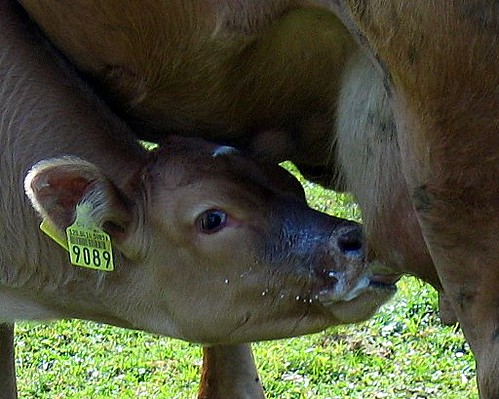good enough for grandpa: the case for whole milk
 I live in a dairy state. To exist in Minnesota without an ice-cold bottle of milk in the fridge is sacrilege. For reasons of both pride and locavoracity, I am saddened by the "big milk" industry's shift away from the Midwest to California, currently the largest milk producing state (with a marketing campaign to match). Our vineyards need some work, but can we at least buy milk from Minnesota or Wisconsin? There are many small, organic producers selling delicious whole milk in our fine communities - try Crystal Ball or Castle Rock.
I live in a dairy state. To exist in Minnesota without an ice-cold bottle of milk in the fridge is sacrilege. For reasons of both pride and locavoracity, I am saddened by the "big milk" industry's shift away from the Midwest to California, currently the largest milk producing state (with a marketing campaign to match). Our vineyards need some work, but can we at least buy milk from Minnesota or Wisconsin? There are many small, organic producers selling delicious whole milk in our fine communities - try Crystal Ball or Castle Rock.
Despite our milk maid roots, it is always a bummer to discover that most people in this green pasture of a state prefer skim or 1% milk. We should know better, and exhibit better taste. For years we have been led to believe, by this industry and our own federal government, that low fat milk is better for us. Our fat phobic culture has skimmed the flavor and nutrition from the milk we drink, in a misguided effort to be healthy. I mean, what the fuck is non-dairy creamer, really? The thought of this junk made me so mad I looked up the manufacturing process and found some info here. No sir, it is not soy milk.
Now the facts. In the words of Nina Planck, author of Real Food for Mother and Baby:
Whole milk is what is called a complete food, because each ingredient plays its part. Without the fat, you can't digest the protein or absorb the calcium.
The body needs saturated fat in particular (monounsaturated and polyunsaturated fat can't do the job) to take in the calcium that makes bones strong. Milk fat also contains glycosphingolipids, which are fats that encourage cell metabolism and growth and fight gastrointestinal infections.
The all-important vitamins A and D are found in the fat. Historically, whole milk and butter were the best sources of these vitamins in the American diet, which had up to 10 times more of both vitamins than modern industrial diets. In skim and low-fat milk, the vitamins are removed along with the fat, so dairies add synthetic A and D. But Vitamins A and D are fat-soluble; that means they cannot be absorbed into the body unless they're taken in with fat. Thus, even fortified skim and low-fat milk are not nearly as beneficial as the real thing.
To debunk your own low fat milk myths, I encourage you to read two excellent articles about the undisputed health benefits of whole milk, as well as the virtues of its raw, farm fresh form. Nature intended it this way.
Whole Milk is Best, by Nina Planck
This article, which appeared in the New York Times, offers a factual look at the benefits of unadulterated milk, and New York City's efforts to promoted low fat milk in low income communities.
I should note that I found a link to this article on the website for Kopplin's Coffee shop in St. Paul, MN. The owner of this fine shop believes in local, organic whole milk so much he refuses to serve low fat milk in any of this coffee drinks.
Should This Milk Be Legal?
Another NYT piece, this article discusses the growing trend of drinking raw cow's milk. Oh no!
photo: jenny downing on flickr

No comments:
Post a Comment